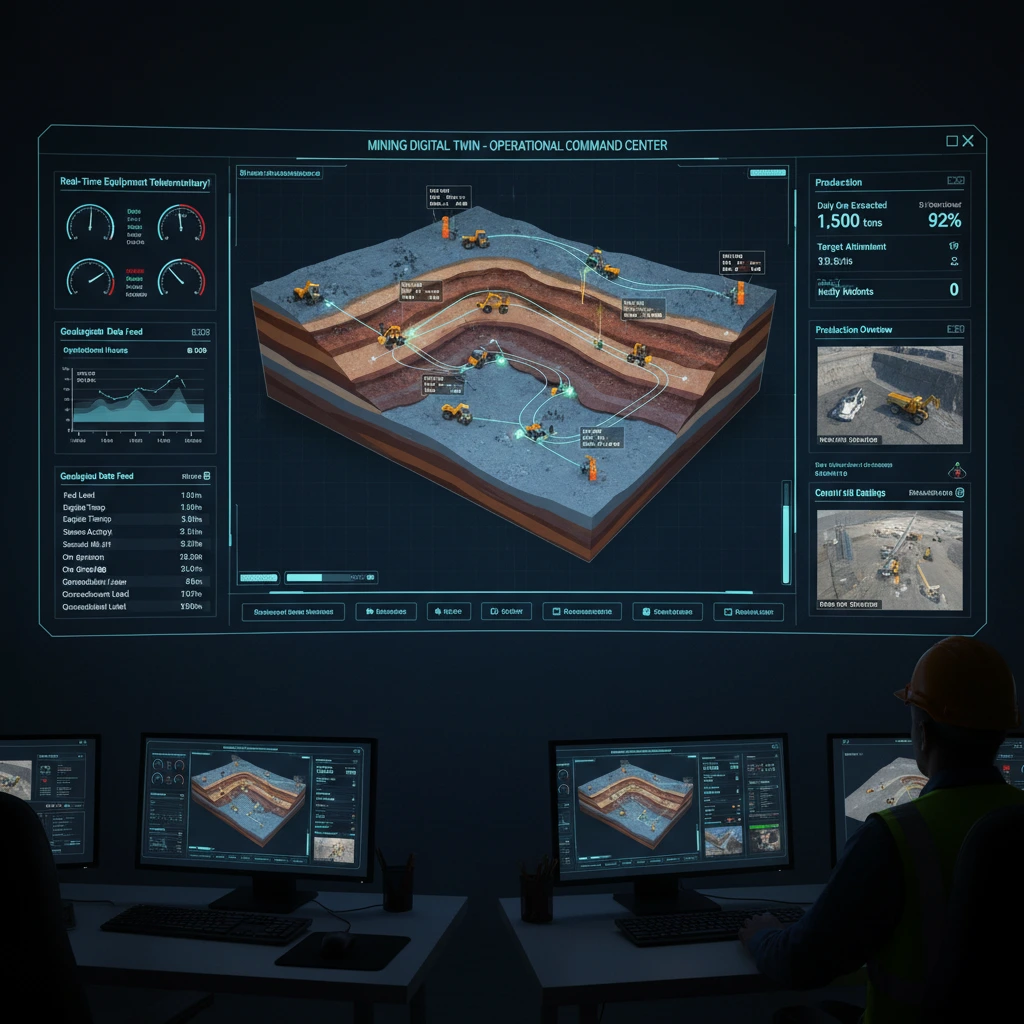Mining 4.0: How Digital Twins Are Making Mines Safer and More Profitable
Mining operations have always involved making decisions with incomplete information. You dig based on geological surveys that might be months or years old. Equipment gets maintained on fixed schedules whether it needs attention or not. Safety protocols rely on static risk assessments that can't account for changing conditions underground.
This approach worked for decades but leaves money on the table and people at unnecessary risk. Mining 4.0 represents applying Industry 4.0 technologies to move away from this reactive model toward something more predictive.
The technology driving this change is the mining digital twin. Instead of working from static maps and periodic inspections, operations teams get a continuously updated virtual model showing actual current conditions throughout the mine.
This enables data-driven mining decisions based on what's happening right now rather than what happened last month.
From Static Model to Dynamic Simulation
A mining digital twin isn't just better 3D mapping software. It's a virtual copy of the entire operation that updates constantly as conditions change.
Sensors throughout the mine feed continuous data into the model. Drilling equipment reports vibration and performance metrics. Autonomous vehicles track their positions and loads. Ventilation systems monitor air quality. Structural sensors measure stress on support systems.
All this information flows into a simulation model that understands mine geology, equipment mechanics, and operational constraints. The model doesn't just show current conditions, it can project what happens next under different scenarios.
This lets mine planners test ideas virtually before implementing them physically.
Will a new blast pattern create stability issues? The digital twin can simulate the blast and show potential structural impacts.
Want to optimize haul routes for autonomous trucks? Test different configurations virtually to find the most efficient paths before changing actual operations.
The Impact on Operations
The practical benefits come from shifting operations from reactive to predictive. Mining automation gets more sophisticated when systems can anticipate problems rather than just respond to them.
- Structural monitoring predicts potential instabilities before they become dangerous. The system tracks stress patterns in support structures and geological shifts that might indicate problems developing.
- Emergency plans get optimized based on the current mine layout and where people are actually working, not static evacuation routes drawn months ago.
- Equipment collision prevention works better when the system knows where every vehicle and worker is in real-time and can predict movement patterns to prevent close calls.
- Equipment utilization improves when you can see bottlenecks developing and adjust before they affect production.
- Processing efficiency gains come from understanding how changes in one part of the operation ripple through the entire system.
Mine lifecycle management through digital twin technology helps optimize everything from initial exploration through eventual mine closure.
The success of mining digital twin implementations depends heavily on data quality, model accuracy, and integration with existing operational systems. Companies that treat it as a monitoring upgrade rather than a strategic operational transformation typically see disappointing results compared to the investment required.
Click here to learn more about advanced digital twins and how they are being used by real businesses.
Frequently Asked Questions
What are digital twins?
Digital twins are virtual replicas of physical objects, processes, or systems that update continuously with real-time sensor data. They mirror the state and behavior of their physical counterparts, allowing simulation, analysis, and prediction without interacting with the actual physical assets.
What is a digital twin in mining?
A digital twin in mining models the entire mine site including geological formations, infrastructure, equipment, and operational workflows. It integrates data from throughout the mine to create a simulation environment for optimizing safety, productivity, and resource extraction across the complete mine lifecycle management process.
What are the four types of digital twins?
The four types represent different scales of modeling complexity:
- Component Twins model individual parts like drill bits or truck engines.
- Asset Twins combine components to model complete equipment like haul trucks or excavators.
- System Twins integrate multiple assets to model full processes like the entire material haulage system.
- Process Twins represent the highest complexity, modeling how all systems work together across the complete mining operation.
What is process mining digital twin?
Process mining analyzes operational data to discover and map how workflows actually function in practice. A process digital twin is a simulation model of known processes. Process mining might reveal how ore transport actually flows through your operation, then you build a digital twin of that workflow to test optimization strategies without disrupting actual production.
Is AI used in digital twins?
Yes, AI plays a critical role in extracting value from digital twin data. The digital twin provides the data environment and simulation capability. AI algorithms analyze patterns in that data to generate predictions about equipment failures, identify optimization opportunities, and recommend operational adjustments. Without AI analysis, digital twins function primarily as expensive monitoring systems rather than predictive tools.
Kavita has been adept at execution across start-ups since 2004. At KiKsAR Technologies, focusing on creating real life like shopping experiences for apparel and wearable accessories using AI, AR and 3D modeling


